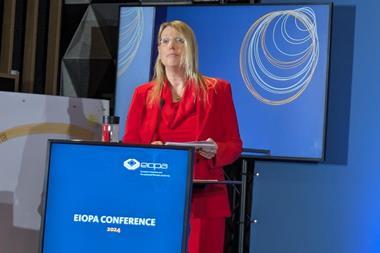UK - Auto-enrolment will benefit more than 95% of people in relation to retirement saving despite means-testing, and the "large majority" expected to get double what they contribute, the government has claimed.
In one of two reports published by the Department for Work and Pensions (DWP) on the impact of pensions reform on existing financial incentives for retirement saving, the government said it needs to "strike a balance between protection from poverty on the one hand and encouraging saving on the other".
James Purnell, secretary of state for work and pensions, stated in the foreword to the report ‘Saving for retirement: Implications of pensions reforms on financial incentives to save for retirement' the pension reforms, including auto-enrolment and compulsory employer contributions, would improve incentives to save and the availability of pension saving.
However, following concerns from the pension industry the government has published two reports, one from the DWP and one completed by PricewaterhouseCoopers (PwC) on behalf of the government relating to the understanding and perceptions of existing incentives, to examine whether there was any group that may fail to gain from saving because the private pension reduces state benefit entitlement.
Purnell stated: "This report makes clear that for virtually everybody, if the benefit system remains the same, saving will make them better off in retirement. For over 95%, on standard assumptions, the expected increase in income is greater than the cost of their contributions, even after taking inflation into account.
"Most will get far more than this - the large majority of savers can expect to get back more than twice what they put in. This reaffirms the Pensions Commission's conclusions that auto enrolment is the right approach to manage the unique challenges of demographic change. Incentives are improved by our reform, and other savings vehicles with no employer contributions are unlikely to give higher returns," he added.
The DWP research focuses on just one part of existing financial incentives, the ‘payback' from saving, which is the extra retirement income bought by each pound of saving.
Although it admitted "many factors are important when deciding how much to save", the DWP claimed on the issue of ‘payback' all 11 core case studies developed in the research get a ‘payback' of more than £1 plus inflation for each £1 contributed, while all but one of the ‘supplementary' case studies - the older lifetime renter - also see the same level of return.
Purnell said the DWP report showed as the reforms mature, less people will need support from income-related benefits, and noted the research "does not find any readily identifiable group in the working-age population whose members would not, on average, gain back more than they put into a pension."
That said, the report acknowledges analysis using the model Pensim2 identified the characteristics of the "small group" who do not receive at least £1 real terms payback for contributions, and highlighted two main sub-groups:
People with a large amount of potential Pension Credit entitlement as a result of extremely low contributory State Pension and no significant private income, or having low income and extra needs, who therefore have a large amount of potential Pension Credit, and Those who rent in retirement and who may, therefore, have potential Housing Benefit entitlement.However it added: "Not everyone with these characteristics will have a low payback. Many people with the characteristics identified can still see positive returns and find themselves in the higher payback groups, particularly if they choose to take some or all of their pension pot as a lump sum."
The research also warned those in working age may not know whether they will have these characteristics when they reach retirement, and as a result the analysis could not find "any large subgroup of working-age adults which does not, on average, get at least £1 back in real terms for every £1 put in during working life".
The government has as a result concluded the existing package of reforms "already strikes the right balance" and so "the package does not need to be changed", although it acknowledged high quality, appropriate and accessible information and guidance will be needed to help individuals "make informed financial decisions".
Meanwhile, the findings of the PwC report ‘Incentives to save for retirement: understanding, perceptions and behaviour' showed that the main barriers to saving could be split into three groups:
Informational/attitudinal barriers - including lack of understanding; not seeking information; and low financial capability; Structural barriers: including complexity; tax/benefit system; and private sector pension coverage, and Behavioural barriers: including cynicism and inertia.The report concluded: "Despite these barriers, tax relief on pension contributions, employers' contributions to employees' pensions and automatic enrolment have been found effectively to incentivise joining and contributing to pension schemes for some but not all groups."
If you have any comments you would like to add to this or any other story, contact Nyree Stewart on + 44 (0)20 7261 4618 or email nyree.stewart@ipe.com












No comments yet